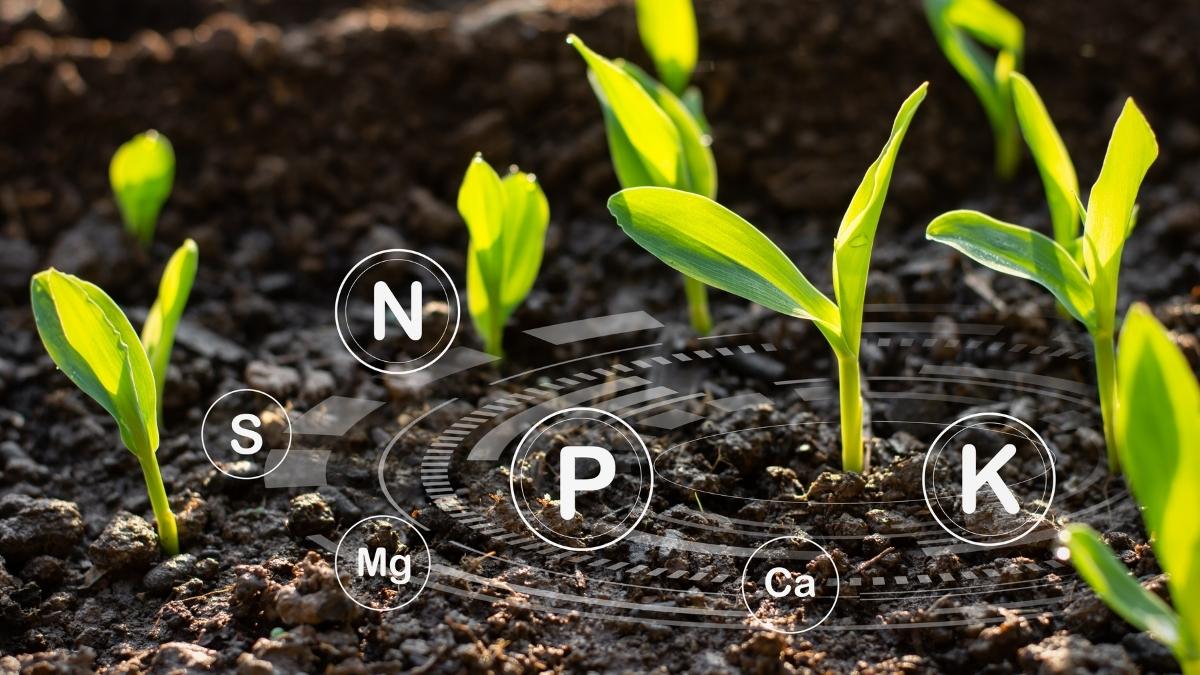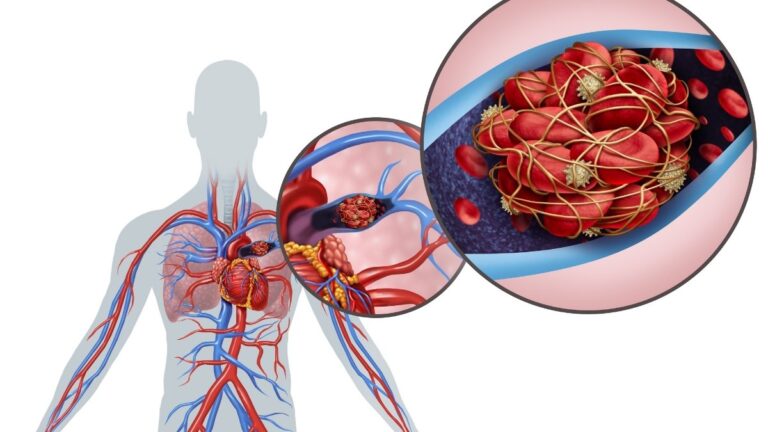15 Trace Minerals Missing From Your Diet Causing Fatigue (According to Functional Medicine Doctors)
You eat organic vegetables, avoid processed foods, and take a multivitamin—so why do you still feel exhausted by 3 PM every day? The answer lies in a hidden epidemic that’s affecting even the most health-conscious individuals: trace mineral depletion.
Over the past 70 years, industrial farming practices have stripped essential trace minerals energy levels depend on from our soil, leaving our food nutritionally bankrupt despite appearing healthy.
These microscopic nutrients serve as crucial cofactors in cellular energy production, yet standard blood tests routinely miss these deficiencies, leaving millions suffering from mineral deficiency fatigue without knowing why. Even organic produce grown in depleted soil can’t provide the trace elements our ancestors consumed.
🥗 Food vs 💊 Supplements
Strategic approach to mineral restoration
Whole Foods
- Better absorption
- Natural mineral ratios
- Includes cofactors
- Safer long-term
- Body recognizes easily
Supplements
- Higher concentrations
- Faster deficiency correction
- Bypasses absorption issues
- Precise dosing
- Fills specific gaps
⚡ 90-Day Energy Transformation
What to expect as you restore your trace minerals
Foundation Setting
Your body starts rebuilding mineral stores. Small improvements in sleep and digestion may appear.
Early Improvements
Real changes begin. Energy becomes more stable and afternoon crashes decrease.
Momentum Building
Energy improvements become obvious. Mental clarity and exercise tolerance improve significantly.
Full Benefits
Complete transformation. Energy levels stabilize at higher baseline with visible improvements.
🏆 Quality Supplement Checklist
4 key factors for choosing effective mineral supplements
Chelated Forms
Minerals bound to amino acids for better absorption. Avoid cheap mineral salts.
Liquid Options
Absorb faster than pills. Great for people with digestive problems.
Third-Party Tested
Look for NSF, USP, or ConsumerLab certifications for quality assurance.
Whole Food Based
Concentrated foods, not synthetic vitamins. Body recognizes them better.
⚡ What Speeds vs Slows Recovery
Factors that affect your mineral restoration timeline
🚀 Speeds Recovery
🐌 Slows Recovery
📊 Mineral Restoration Stats
Important numbers to know about your recovery journey
💡 Pro Tip
Start with testing to identify your specific deficiencies, then focus on mineral-dense whole foods as your foundation. Use supplements strategically to fill gaps and speed recovery.
The Science Behind Trace Minerals and Energy Production
Your body makes energy inside tiny factories called mitochondria. These cellular powerhouses need specific trace minerals to work properly. Without them, you feel tired no matter how much you sleep.
Think of trace minerals as keys. Each one unlocks a different energy pathway in your cells. When you’re missing these keys, your energy production shuts down.
What Makes Trace Minerals Different
Your body needs two types of minerals. Macro minerals like calcium and magnesium are needed in large amounts. Trace minerals are needed in tiny amounts, but they’re just as important.
Here’s the key difference: trace minerals work as cofactors. They help enzymes do their jobs. Without them, the enzymes that make energy can’t function.
Your Mitochondria Need These Minerals
Every cell in your body has mitochondria. Your heart has about 5,000 per cell. Your brain cells can have up to 10,000. These energy factories run on a process that requires multiple trace minerals working together.
When you eat food, your body breaks it down into glucose. Your mitochondria then convert glucose into ATP – the energy currency your cells use. This process needs chromium, manganese, molybdenum, and other essential trace elements.
The Modern Mineral Crisis
USDA data shows that our food has lost 20-40% of its mineral content since 1950. Broccoli today has half the calcium it had 70 years ago. Spinach has lost 45% of its iron content.
This happened for two reasons. First, our soil is depleted. Industrial farming strips minerals from the earth faster than nature can replace them. Second, food processing removes what little minerals remain.
Research shows that mitochondrial function depends on adequate mineral status. When functional medicine doctors test patients using optimal reference ranges instead of conventional lab ranges, they find widespread deficiencies.
Your conventional doctor might say your minerals are “normal.” But functional medicine practitioners use tighter ranges based on optimal cellular function, not just preventing disease.
The result? Millions of people walk around with subclinical mineral deficiencies that drain their energy every day.
1. Chromium – Blood Sugar Regulation and Energy Metabolism

Chromium helps insulin work better. When your cells can’t use glucose properly, you feel tired and crave sugar.
Signs of deficiency: Sugar cravings, energy crashes after meals, difficulty losing weight, mood swings
Best food sources: Broccoli, grape juice, whole grains, grass-fed beef
Why it’s depleted: Food processing removes up to 80% of chromium. Refined foods contain almost none.
Functional medicine insights: Optimal chromium levels improve insulin sensitivity and stabilize blood sugar. Many people need 200-400 mcg daily for therapeutic effects.
2. Manganese – Antioxidant Enzyme Function and Carb Metabolism

Manganese powers your body’s main antioxidant enzyme, superoxide dismutase. It also helps break down carbohydrates for energy.
Signs of deficiency: Poor wound healing, bone problems, reproductive issues, blood sugar imbalances
Best food sources: Pineapple, pecans, sweet potatoes, spinach
Why it’s depleted: Soil depletion and food processing. Many people get only 1-2 mg daily instead of the optimal 5-10 mg.
Functional medicine insights: Manganese deficiency often shows up with other antioxidant enzyme problems. Testing superoxide dismutase activity can reveal deficiency.
3. Molybdenum – Sulfur Metabolism and Detoxification

Molybdenum helps your liver break down toxins and process sulfur compounds. Without it, you can’t detox properly.
Signs of deficiency: Chemical sensitivities, sulfite reactions, poor detoxification, fatigue after eating sulfur-rich foods
Best food sources: Legumes, leafy greens, cauliflower, liver
Why it’s depleted: Acid rain and soil depletion have reduced molybdenum in many regions. Some areas have naturally low levels.
Functional medicine insights: People with sulfite sensitivity often improve with molybdenum supplementation. Optimal levels support phase 2 liver detoxification.
4. Boron – Hormone Regulation and Mineral Absorption

Boron helps your body use calcium, magnesium, and vitamin D. It also supports healthy hormone levels.
Signs of deficiency: Bone problems, hormonal imbalances, poor mineral absorption, joint pain
Best food sources: Apples, pears, grapes, nuts, avocados
Why it’s depleted: Modern agriculture doesn’t replace boron in soil. Most people get less than 1 mg daily.
Functional medicine insights: Boron supplementation can raise testosterone and estrogen to healthy levels. It also improves calcium absorption.
5. Vanadium – Insulin Sensitivity and Glucose Metabolism

Vanadium acts like insulin in your cells. It helps glucose enter cells for energy production.
Signs of deficiency: Blood sugar problems, insulin resistance, poor glucose tolerance, fatigue after meals
Best food sources: Mushrooms, shellfish, black pepper, dill
Why it’s depleted: Industrial pollution actually increases vanadium in some areas, but bioavailable forms are rare in food.
Functional medicine insights: Vanadium sulfate can improve glucose metabolism in people with insulin resistance. Small doses work better than large ones.
6. Cobalt – B12 Synthesis and Red Blood Cell Formation

Cobalt is the center of vitamin B12. Without it, you can’t make healthy red blood cells or maintain your nervous system.
Signs of deficiency: Fatigue, weakness, nerve problems, memory issues, anemia
Best food sources: Organ meats, fish, dairy products, fermented foods
Why it’s depleted: B12 deficiency is really cobalt deficiency. Poor gut health reduces B12 absorption.
Functional medicine insights: Some people need cobalt supplementation along with B12. Testing methylmalonic acid shows true B12 status.
7. Lithium – Neurotransmitter Balance and Stress Response

Lithium supports brain health and mood stability. The trace amounts in food are different from prescription lithium.
Signs of deficiency: Mood swings, anxiety, depression, poor stress tolerance, brain fog
Best food sources: Whole grains, vegetables, mineral water, eggs
Why it’s depleted: Water treatment removes lithium. Modern diets provide very little.
Functional medicine insights: Low-dose lithium (5-20 mg) can improve mood and protect brain cells. It’s much safer than prescription doses.
8. Germanium – Oxygen Utilization and Immune Function

Germanium helps your cells use oxygen more efficiently. It also supports immune function.
Signs of deficiency: Poor exercise tolerance, frequent infections, slow healing, fatigue
Best food sources: Garlic, shiitake mushrooms, ginseng, aloe vera
Why it’s depleted: Soil depletion and limited food sources. Most people get very little germanium.
Functional medicine insights: Organic germanium may help with chronic fatigue and immune problems. Avoid inorganic forms.
9. Rubidium – Potassium Transport and Cellular Energy

Rubidium works with potassium to maintain cellular energy. It helps nutrients enter cells and waste products leave.
Signs of deficiency: Muscle weakness, poor cellular energy, electrolyte imbalances
Best food sources: Coffee, tea, fruits, vegetables
Why it’s depleted: Food processing and soil depletion reduce rubidium content. Most people are deficient.
Functional medicine insights: Rubidium may help with depression and cellular energy production. It’s often overlooked in mineral testing.
10. Strontium – Bone Health and Calcium Metabolism

Strontium strengthens bones and helps calcium work better. It’s especially important for bone density.
Signs of deficiency: Bone problems, poor calcium absorption, dental issues, fractures
Best food sources: Seafood, whole grains, root vegetables, brazil nuts
Why it’s depleted: Soil depletion and food processing. Many people get insufficient amounts.
Functional medicine insights: Strontium supplementation can improve bone density better than calcium alone. Natural forms are preferred over synthetic.
11. Nickel – Iron Absorption and Enzyme Function

Nickel helps your body absorb and use iron. It’s also needed for several important enzymes.
Signs of deficiency: Iron deficiency anemia, poor enzyme function, skin problems
Best food sources: Chocolate, nuts, beans, whole grains
Why it’s depleted: Food processing removes nickel. Soil depletion reduces natural levels.
Functional medicine insights: Some people with iron deficiency don’t improve until nickel status is corrected. Small amounts are needed.
12. Tin – Growth and Development Factors

Tin supports normal growth and development. It may also help with hair and skin health.
Signs of deficiency: Poor growth, hair problems, slow healing
Best food sources: Canned foods (from tin cans), organ meats, fish
Why it’s depleted: Modern food packaging reduces tin exposure. Natural food sources are limited.
Functional medicine insights: Tin deficiency is rare but may affect some people. Testing is limited and not widely available.
13. Silicon – Connective Tissue and Mineral Transport

Silicon strengthens connective tissue and helps transport other minerals. It’s important for skin, hair, and nail health.
Signs of deficiency: Weak connective tissue, brittle nails, thinning hair, joint problems
Best food sources: Whole grains, bananas, green beans, beer
Why it’s depleted: Food processing removes silicon. Refined foods contain very little.
Functional medicine insights: Silicon supplementation can improve hair, skin, and nail health. It also supports bone formation.
14. Sulfur – Detoxification and Protein Synthesis

Sulfur is needed for detoxification and making proteins. It’s especially important for glutathione production.
Signs of deficiency: Poor detoxification, joint problems, skin issues, slow healing
Best food sources: Garlic, onions, cruciferous vegetables, eggs
Why it’s depleted: Soil depletion and food processing. Many people avoid sulfur-rich foods due to digestive issues.
Functional medicine insights: Sulfur deficiency can impair phase 2 detoxification. MSM supplementation may help some people.
15. Iodine – Thyroid Function and Metabolic Rate

Iodine is essential for thyroid hormone production. Your thyroid controls your metabolic rate and energy levels.
Signs of deficiency: Fatigue, weight gain, cold intolerance, brain fog, depression
Best food sources: Seaweed, fish, dairy products, iodized salt
Why it’s depleted: Soil depletion and reduced salt intake. Bromine and fluoride can displace iodine.
Functional medicine insights: Many people are iodine deficient despite normal TSH levels. Loading tests can reveal true iodine status.
How Modern Agriculture Depleted Our Food Supply
Industrial farming created an energy crisis in our food supply. Here’s how it happened.
The NPK Problem
Modern farmers use NPK fertilizers – nitrogen, phosphorus, and potassium. These three minerals make plants grow big and green. But they don’t replace the dozens of trace minerals plants need.
It’s like feeding someone only protein, carbs, and fat. They might look healthy, but they’d be missing vitamins and minerals. That’s what happened to our soil.
Fast Growth, Low Nutrients
Today’s crops grow faster than ever. A tomato that took 120 days to ripen in 1950 now ripens in 65 days. Faster growth means less time to absorb minerals from soil.
Think of it like this: if you had half the time to pack for a trip, you’d probably forget important things. Plants are doing the same thing with minerals.
Processing Removes What’s Left
Food processing strips away the few minerals that make it from soil to plant. White flour has lost 80% of its minerals compared to whole wheat. Sugar processing removes 100% of trace minerals.
Even “healthy” processing like juicing removes the mineral-rich pulp and fiber.
Geographic Mineral Lottery
Where your food grows matters. Selenium levels vary by 10,000% depending on soil location. Foods from selenium-poor areas can’t provide what you need.
Most food travels thousands of miles to reach you. You have no idea if it came from mineral-rich or mineral-poor soil.
The Comparison That Shows the Problem
In 1950, one orange provided all the vitamin C you needed. Today, you’d need 8 oranges to get the same amount. The same pattern holds for most minerals.
This isn’t about getting sick from deficiency diseases like scurvy. It’s about not having enough minerals for optimal energy production and cellular function.
Testing for Trace Mineral Deficiencies
Your regular blood test won’t catch trace mineral problems. Here’s why and what works better.
Why Standard Blood Panels Miss the Problem
Blood tests show what’s floating in your bloodstream right now. But minerals work inside your cells. You can have normal blood levels and still be deficient where it matters.
Your body also maintains blood mineral levels by taking from your bones and tissues. So blood tests often look normal until you’re severely deficient.
Better Testing Options
Hair mineral analysis shows what’s been happening in your body over the past 3 months. It’s not perfect, but it gives a good picture of your mineral status.
Red blood cell mineral testing looks inside your cells instead of just blood serum. This gives a better idea of what your cells actually have available.
Organic acids testing shows how well your cellular energy production is working. When you’re missing mineral cofactors, specific organic acids build up in your urine.
Symptoms-Based Assessment
Sometimes your symptoms tell the story better than any test. Keep a symptom diary for 2 weeks. Note energy levels, mood, cravings, and physical symptoms.
Many functional medicine practitioners use questionnaires that connect symptoms to specific mineral deficiencies. These aren’t perfect, but they’re surprisingly accurate.
Working With Practitioners
Find a functional medicine doctor, naturopath, or nutritionist who understands mineral testing. They’ll interpret results differently than conventional doctors.
Functional practitioners use optimal reference ranges, not just “normal” ranges. They look for patterns and connections between different minerals.
Cost and Insurance
Most mineral testing isn’t covered by insurance. Hair analysis costs $100-200. Blood mineral panels run $200-400. Organic acids testing costs $300-500.
Consider it an investment in your energy and health. The cost of testing is often less than what people spend on ineffective supplements.
Restoring Trace Minerals: Food vs. Supplements
Getting your minerals back takes strategy. Here’s how to do it right.
Food First, But Know the Limits
Whole foods should be your first choice. Your body recognizes and absorbs minerals from food better than synthetic supplements.
But here’s the problem: even the best diet might not provide enough trace minerals anymore. You’d need to eat perfectly grown food from mineral-rich soil every day.
Best Whole Food Sources
Organ meats are the most mineral-dense foods on the planet. Liver provides more bioavailable minerals than any supplement. If you can’t stomach organ meats, try liver pills or powder.
Wild-caught fish and shellfish concentrate minerals from seawater. Oysters are especially rich in zinc, copper, and other trace minerals.
Sea vegetables like kelp and dulse provide iodine and many other trace minerals. Even small amounts pack a big nutritional punch.
Fermented foods improve mineral absorption. The fermentation process breaks down antinutrients that block mineral uptake.
When Supplements Make Sense
If you’re severely deficient, food alone won’t fix the problem fast enough. Strategic supplementation can jumpstart your recovery.
People with digestive problems often can’t absorb minerals well from food. Supplements can bypass some absorption issues.
Certain minerals like iodine are hard to get from food unless you eat seaweed regularly. Supplementation might be your only option.
Quality Supplement Selection
Look for chelated minerals. These are bound to amino acids, which helps absorption. Avoid cheap mineral salts like magnesium oxide.
Whole food supplements work well for some people. These are concentrated foods, not synthetic vitamins.
Liquid minerals absorb faster than pills. This matters if you have digestive problems.
Third-party testing ensures what’s on the label is actually in the bottle. Look for NSF, USP, or ConsumerLab certifications.
Dosage Guidelines
Start low and go slow. Your body needs time to adjust to increased mineral intake. Too much too fast can cause digestive upset.
Take minerals with food to improve absorption and reduce stomach irritation. Don’t take them with coffee or tea, which can block absorption.
Some minerals compete with each other. Iron blocks zinc absorption. Calcium can interfere with magnesium. Space them out or find balanced formulas.
Safety Considerations
More isn’t always better with trace minerals. Some can be toxic in high doses. Selenium, for example, has a narrow safe range.
Work with a knowledgeable practitioner if you’re supplementing multiple minerals. They can help prevent interactions and overdoses.
Get retested after 3-6 months to see if your approach is working. Adjust dosages based on results and how you feel.
The Energy Transformation Timeline
Here’s what to expect as you restore your trace minerals.
The First 2 Weeks: Foundation Setting
Don’t expect miracles immediately. Your body needs time to rebuild mineral stores and restore enzyme function.
You might notice small improvements in sleep quality or digestion. Some people feel slightly more stable energy, but dramatic changes are rare this early.
Stay consistent with your protocol. Your cells are starting to get the raw materials they need, but transformation takes time.
30 Days: Early Improvements
This is when most people start noticing real changes. Energy becomes more stable throughout the day. Afternoon crashes become less severe.
Sleep often improves first. You might fall asleep faster or feel more rested in the morning. Your mood may become more stable.
Cravings for sugar and refined foods often decrease. This happens because your cells can make energy more efficiently.
60 Days: Momentum Building
Energy improvements become more obvious. You might wake up feeling refreshed instead of tired. Physical stamina often increases.
Mental clarity improves for many people. Brain fog lifts and concentration gets better. This happens because your brain cells are getting the minerals they need.
Exercise tolerance often improves. You might find workouts easier or recover faster between sessions.
90 Days: Full Benefits
By three months, most people feel significantly better if they’ve been consistent. Energy levels stabilize at a higher baseline.
Hair, skin, and nails often improve around this time. These tissues reflect your overall mineral status.
Lab tests usually show improvement by 90 days. Hair mineral analysis will reflect changes you’ve made over the past 3 months.
Factors That Speed Recovery
Good digestion helps you absorb minerals better. Fix gut problems first if you have them.
Reducing stress improves mineral absorption and reduces losses. Chronic stress depletes many minerals.
Quality sleep helps your body rebuild and restore. Most cellular repair happens while you sleep.
Regular exercise improves circulation and helps minerals reach your cells.
Factors That Slow Recovery
Poor digestion blocks mineral absorption. Antacids, in particular, reduce stomach acid needed for mineral absorption.
Chronic stress depletes minerals faster than you can replace them. Address stress management alongside mineral restoration.
Alcohol, caffeine, and processed foods increase mineral losses. You don’t have to eliminate them, but moderation helps.
Certain medications can interfere with mineral absorption or increase losses. Work with your doctor if you take multiple medications.
Long-Term Maintenance
Once you’ve restored your minerals, you can often reduce supplement doses. But you’ll probably need some ongoing support due to soil depletion.
Focus on mineral-dense whole foods as your foundation. Supplements become insurance rather than treatment.
Retest annually to make sure you’re maintaining good levels. Adjust your approach based on results and life changes.
Conclusion
Your energy problems might not be about sleep, stress, or motivation. They could be about missing minerals that your cells need to make energy.
The 15 critical trace minerals we covered are the keys that unlock your cellular energy production. Without them, you’ll feel tired no matter what else you do.
Modern agriculture and food processing have created a hidden epidemic of mineral deficiency. The foods that sustained our ancestors simply don’t provide the same nutrition today.
But you’re not powerless. You can test your mineral status, choose mineral-dense foods, and supplement strategically when needed.
The connection between soil health and human health is real. As we restore minerals to our bodies, we also need to support regenerative farming that rebuilds soil.
Your Next Steps
Start by getting a comprehensive mineral analysis. Hair testing or red blood cell minerals will show you where you stand.
Choose three mineral-rich foods to add to your daily routine this week. Organ meats, wild fish, and sea vegetables are good starting points.
Work with a functional medicine practitioner who understands mineral restoration. They can guide your supplement choices and monitor your progress.
Remember: restoring your trace minerals energy levels takes time, but the transformation is worth the wait. Your cells are counting on you to give them what they need.








